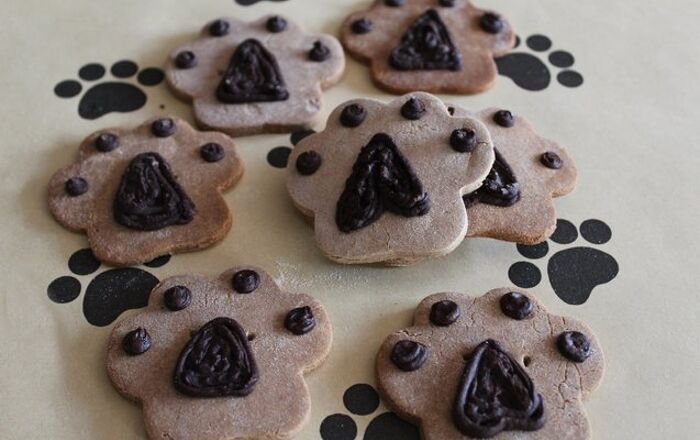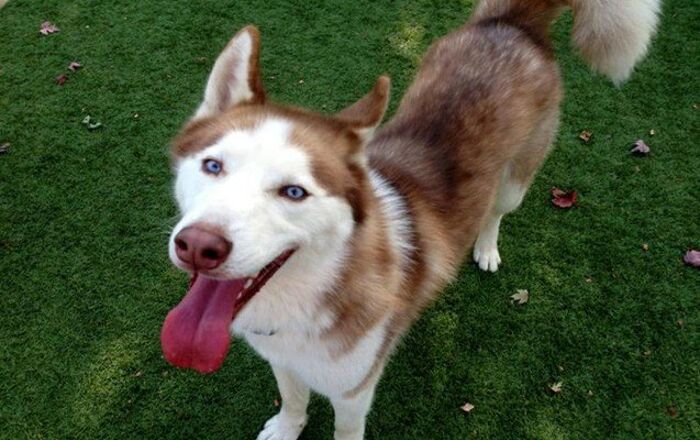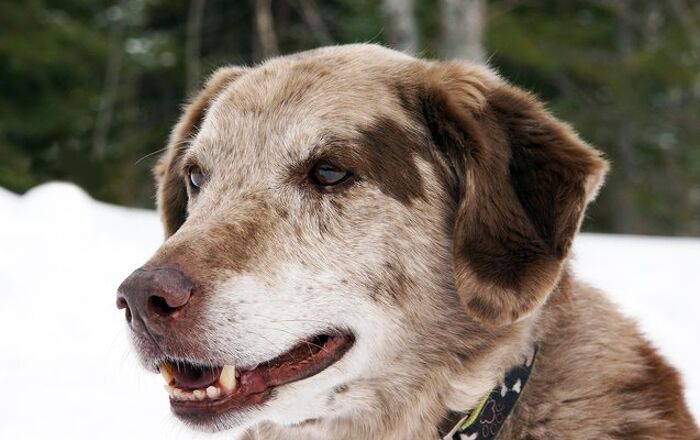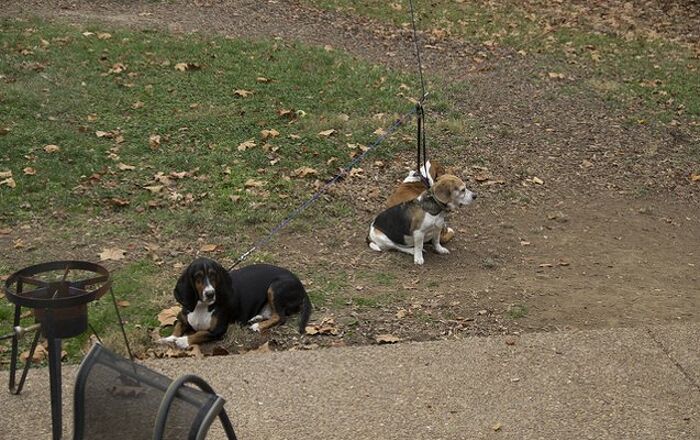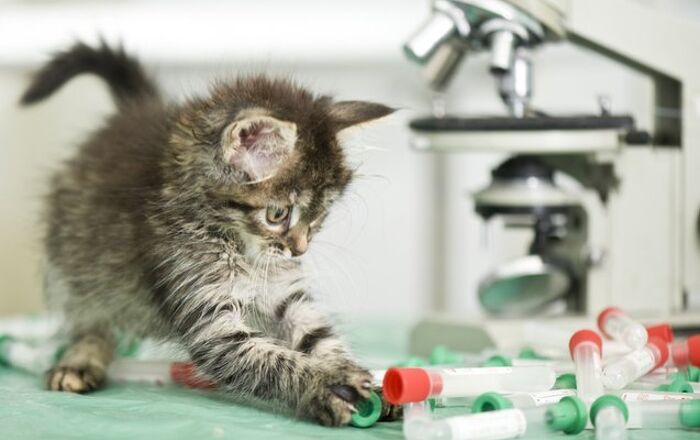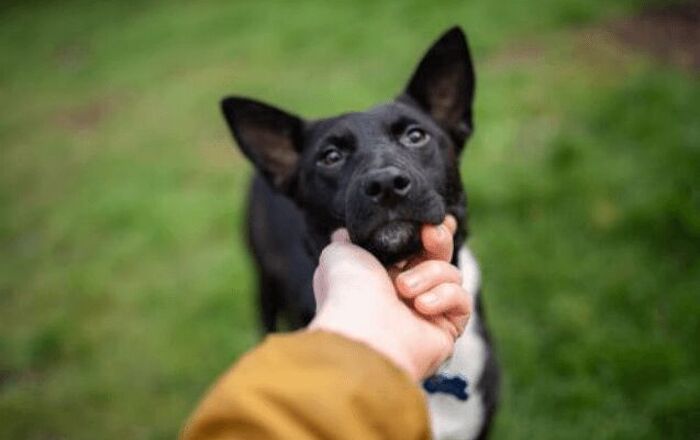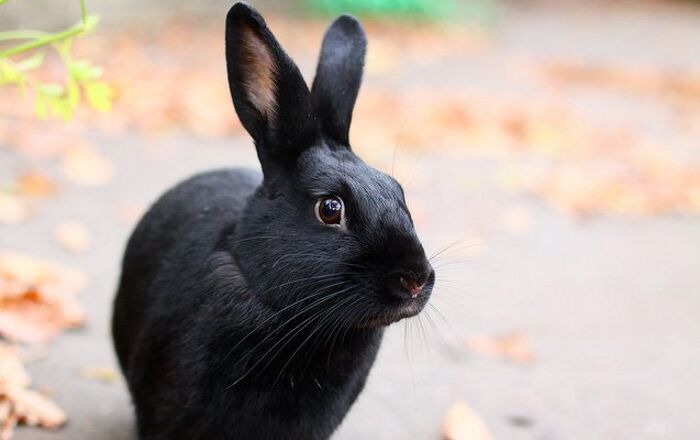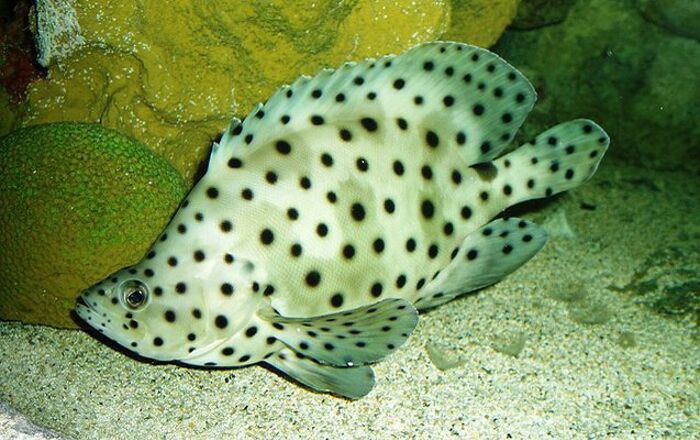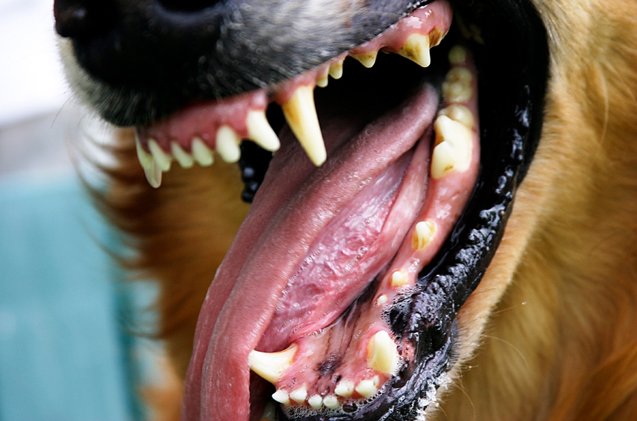
Ick! It’s gross, but you can’t hide from it – tartar buildup on your dog’s teeth can be a serious issue
It’s not pretty but we’ve got to talk about it – tartar buildup on dog’s teeth. It’s that nasty brown stain you see when your dog smiles, pants or yawns really wide. It doesn’t take long to form. In fact, just a couple of hours after your dog eats, tartar gets to work and that gummy gunk starts forming on teeth. It’s your job, as a pet parent, to take care of your dog’s dental health… and that means taking care of tartar before it becomes a problem.
How Tartar Works
Tartar is a devious little bugger! It doesn’t start out as tartar. It first makes an appearance as plaque, which begins to form hours after a dog eats. It combines with the salts that are found in saliva. As it builds up and hardens, that’s when plaque turns into tartar. Once tartar forms, dental problems and gum disease can’t be too far behind.
What’s The Big Deal?
Just like with our teeth, plaque and tartar can wreak on a dog’s mouth. All those bacteria growing are a ticking time bomb just waiting to go off. The aftermath could result in gingivitis, periodontal disease, abscesses or lost teeth.
Tartar likes to be pushy, too. As it builds up along the gum line, it will push the gums away from the teeth. This exposes the roots of the teeth, which are no longer covered by enamel. Because the roots are no longer protected, it leaves them open to sensitivities, causing your dog pain and discomfort.
But tartar isn’t content with just hanging around in your dog’s mouth. Nope, it needs to explore your dog’s body. Bacteria hitch a ride in the bloodstream and make its way to the heart and kidneys. And you know that the outcome will never be good in a situation like this!
Periodontal Disease and Your Dog
One of the most common diseases caused by an excess build-up of tartar is periodontal disease which is estimated to be experienced by 80% of all dogs at some degree by the age of 2. The disease presents in two different stages, depending on how long it is allowed to grow and develop. The first, known as gingivitis, involves inflammation in the gums. If this is left unmanaged and continues to get worst, it can then progress to the second stage, known as periodontitis, where the inflammation moves to the supporting structures of your dog’s teeth.
Some signs of periodontal disease include red or bleeding gums, difficulty eating, tooth sensitivity, pain while eating, loose or missing teeth, bad breath, tooth discoloration, weight loss, excessive drooling, or favoring one side of the mouth while chewing. If the disease is allowed to spread to the supporting structures, it can trigger the breakdown and destruction of the roots of your dog’s teeth. Not only is this painful for your dog, but it can also lead to tooth loss when the roots degrade far enough.
Home Dental Checks
Often referred to as the ‘silent disease’, periodontal disease rarely presents with any obvious signs before the advanced stages. At this point, the disease is likely causing significant pain for your pup – something that most pet parents obviously want to avoid!
While a home dental check should never be viewed as a substitute for proper veterinary care, getting into the habit of routinely checking the condition of your dog’s teeth and gums will help you catch the early signs of a problem before it’s allowed to progress too far. Watch for any signs of sensitivity while handling your dog’s mouth, as well as any of the above signs. If you observe any signs of damage or plaque build up in your dog’s mouth, contact your veterinarian to discuss the next best steps!
What Can You Do About Plaque and Tartar?
Tartar doesn’t have to get the upper hand in your dog’s mouth. Here’s what you can do to keep tartar at bay:
What are Dental Toys?
What exactly are dental toys and what separates them from any other toy on the market? The truth is that there isn’t much of a different outside of the texture of the toy. Dog dental toys are durable toys designed to encourage your dog to chew. The exterior of the toy often features nubs, ridges, bristles, and other interesting textures that work to help loosen and remove plaque from your dog’s teeth while massaging their gums. Rope features can also be included due to the unique way that they scrape at your dog’s teeth as they are chomping down. They are available in a wide variety of sizes and shapes, including those that are specifically designed for aggressive chewers.
Many of these toys feature delicious flavors such as bacon, beef, or chicken to encourage your dog to continue chewing for as long as possible, while the toy works its magic. There are even options that incorporate ingredients like baking soda to help eliminate bacteria and freshen your dog’s breath. After all, no dog parent wants to get kisses form a dog with horrible breath!
We’d like to hear about your experience with tartar buildup on your dog’s teeth. Please leave your comments in the section provided below.

